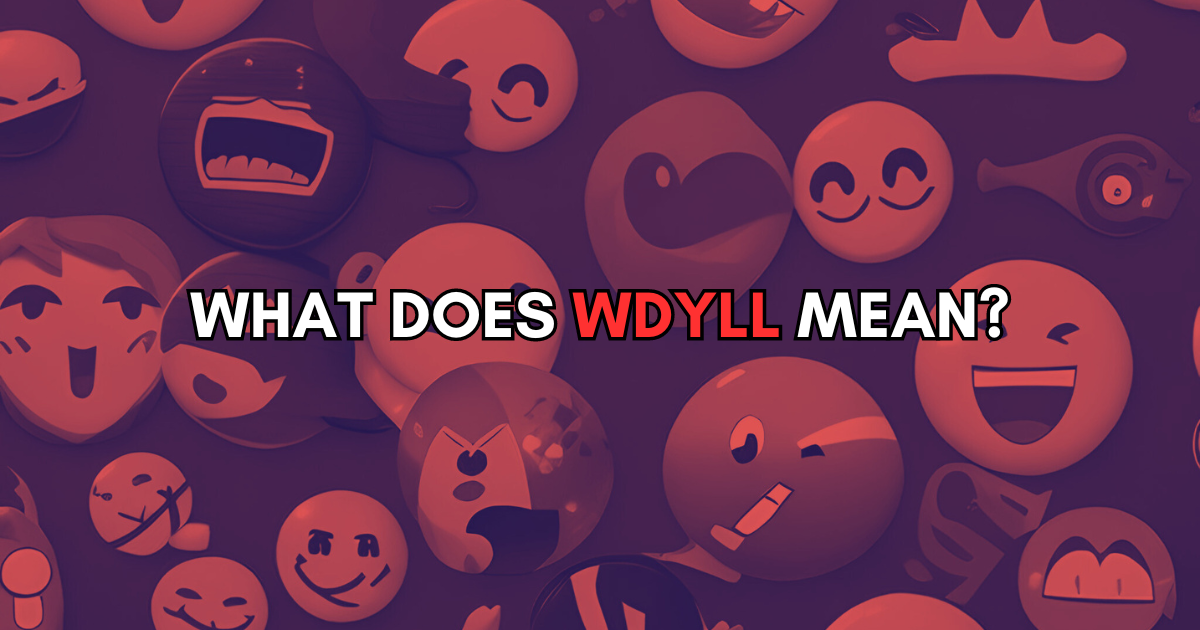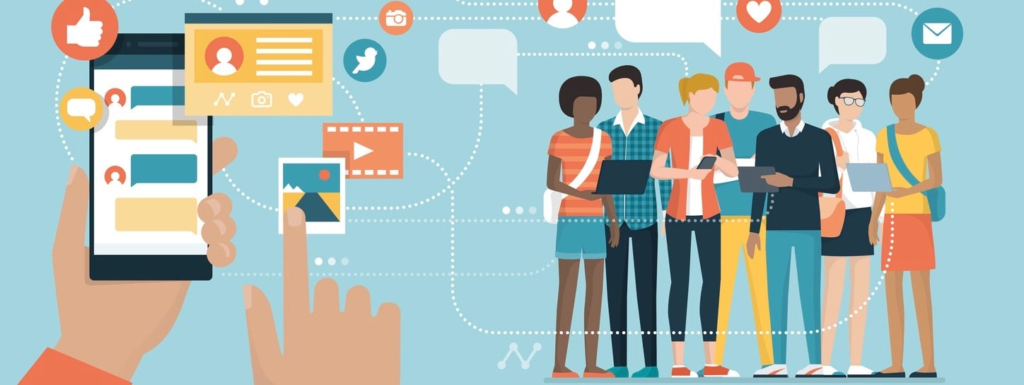
In today’s fast-paced digital world, acronyms and abbreviations have become essential tools in making communication more efficient. Shortened phrases and acronyms allow for quicker, more concise communication, especially in the context of texting, social media, and online interactions. As online slang evolves, people continuously create new ways to express themselves without typing long-winded sentences.
One acronym that has gained significant traction in recent years is WDYLL, which stands for “What Do You Look Like?” While seemingly simple, this acronym is loaded with significance, used in a variety of digital contexts to ask about someone’s physical appearance or to initiate a conversation about someone’s looks. But WDYLL is more than just a question—it’s a reflection of how we communicate in today’s digital era.
In this article, we will explore the meaning of WDYLL, trace its origins, and examine how it is used on different platforms. From casual text messages to online dating and social media conversations, WDYLL has become an essential part of modern communication. Let’s dive into the origins and significance of this acronym, how it shapes online interactions, and its place in internet culture.
1. What Does WDYLL Mean? A Breakdown of the Acronym
Let’s start with the basics: WDYLL is an acronym that stands for “What Do You Look Like?” It is used in conversations, especially on social media platforms, texting apps, and online forums, to ask someone about their physical appearance or to prompt a description of how they look. While the full phrase “What Do You Look Like?” is relatively straightforward, the use of WDYLL has become a shorthand that makes the communication process quicker and more casual.
How WDYLL is Used in Everyday Conversations
The simplicity of WDYLL makes it perfect for text messaging, where people seek brevity but still want to engage in meaningful conversations. The acronym can appear in many casual exchanges, where one person is trying to learn more about the other or simply wants to continue a conversation by focusing on someone’s looks. In a text conversation or social media chat, WDYLL can serve as a lighthearted way to spark curiosity or simply get to know someone.
For example, someone might use WDYLL when they are talking to a friend and wondering how they are looking today. It’s a subtle way of complimenting someone and asking about their current appearance without the need to be overly formal. Or, in a social media setting, it can be used when people post selfies and others are curious about how they look in real-time.
2. Origins of WDYLL: How Did This Acronym Emerge?
The use of acronyms and shorthand phrases has grown significantly with the rise of mobile texting and social media platforms. WDYLL is one of many such abbreviations that have been born out of the need for quick, efficient, and often informal communication.
The Influence of Online Communities and Text Messaging
The popularity of WDYLL coincided with the increasing use of texting platforms like SMS, instant messaging apps, and social media outlets. Texting, as a medium of communication, demands brevity because of character limits and the fast pace at which people expect responses. As a result, new acronyms and abbreviations began to emerge to speed up conversations.
The rise of platforms such as Facebook, Twitter, Instagram, and Snapchat also significantly contributed to the emergence of shorthand like WDYLL. These platforms, which are inherently informal, encourage users to interact with one another in quick, concise bursts. Whether people are asking questions, sharing information, or just chatting, acronyms like WDYLL make communication smoother.
Moreover, WDYLL arose during the peak of the texting era, where people were already accustomed to typing less to save time. For example, asking someone “What do you look like?” in a long-form manner was seen as a slow way of engaging in conversation, while WDYLL made the same question feel more casual and rapid.
3. WDYLL in Modern Online Communication: How It’s Used Today

Today, WDYLL is used across a wide variety of online platforms. It has evolved beyond just a question about appearance and can also be used as a conversation starter, a playful inquiry, or even a way to break the ice when meeting someone online.
WDYLL in Online Dating and Casual Encounters
One of the most common settings where you’ll encounter WDYLL is in online dating. Apps like Tinder, Bumble, and Hinge have become synonymous with fast-paced interactions, where users often ask questions to break the ice or learn more about each other. In this context, WDYLL is a lighter and more engaging way to inquire about someone’s looks. Instead of asking, “What do you look like?” which can come across as dry or impersonal, WDYLL makes the question feel more informal and fun.
For example, if someone is texting with a match and they’re curious about what the person looks like, they might simply ask, “WDYLL?” It’s not as serious as asking for a detailed description, but it encourages the other person to share a bit about their physical features, either through words or a photo.
The use of WDYLL in online dating can also be a playful way to engage with potential partners, offering a more relaxed and fun approach to the process of getting to know someone.
WDYLL on Social Media
On social media platforms like Instagram, Twitter, and Snapchat, WDYLL is frequently used in response to posts, particularly selfies or photos shared by others. If someone posts a picture, especially on platforms like Instagram, followers or friends may ask, “WDYLL?” to inquire more about how the individual is looking in that moment.
For instance, if a person posts a photo of themselves after getting a fresh haircut, someone might respond with “WDYLL?” as a lighthearted and casual inquiry about the new look.
WDYLL also serves as an easy way for users to engage with each other by asking for a description, making it much more interactive and less awkward than the full phrase.
4. The Rise of Internet Slang and Acronyms: Why Are They So Popular?
Acronyms like WDYLL are part of a larger trend of internet slang and shorthand that has grown exponentially in the age of texting, tweeting, and online conversations. But why do these acronyms gain so much popularity?
The Need for Speed in Digital Communication
A major reason for the popularity of acronyms like WDYLL is the desire for speed. People increasingly prefer quick exchanges, especially on social media and through text. As people become accustomed to rapid communication, abbreviations like WDYLL offer a way to ask meaningful questions and make statements without taking too long to type.
For example, in a fast-paced online conversation, if you want to know about someone’s appearance or what they look like right now, asking “WDYLL?” is quicker than typing out the full question. It’s more efficient, and it helps maintain the flow of conversation in real-time exchanges.
The Informality of Digital Interactions
Another key factor in the popularity of acronyms like WDYLL is the informality of online communication. Many platforms prioritize a casual, conversational tone. The tone on platforms like Twitter, TikTok, and Snapchat is relaxed and often more playful. WDYLL reflects this informal style, as it keeps the conversation light without making it feel too rigid or formal.
With platforms like Instagram and Snapchat, where people share images and short videos rather than lengthy paragraphs, acronyms help people stay concise and relevant. The introduction of acronyms like WDYLL reflects this shift toward brevity while still maintaining meaning in communication.
5. Variations of WDYLL: Other Acronyms and Slang You Should Know
Just as WDYLL has become a part of modern internet slang, other similar acronyms and shorthand expressions are commonly used in digital communication. Here are some variations and related slang that you might encounter:
What Does WDYW (What Do You Want) Mean?
WDYW stands for “What Do You Want?” This abbreviation is commonly used in text messages or social media exchanges when someone is asking for clarification on what the other person is seeking. For example, if someone messages you asking if you are free to chat, you might reply with WDYW? to ask for more information or specifics.
What Does WDYT (What Do You Think) Mean?
WDYT is another common acronym used online. It stands for “What Do You Think?” This abbreviation is perfect for asking someone for their opinion on something, like a new photo, a post, or even an idea. It’s widely used in social media conversations when someone wants feedback from others.
6. How to Use WDYLL Effectively in Your Conversations
Now that you know what WDYLL means, let’s dive into some best practices for using it effectively. Using acronyms like WDYLL can help keep your online conversations smooth and friendly, but it’s important to use them appropriately.
Be Mindful of Context
While WDYLL is a great way to communicate casually, it’s important to use it in the right context. In professional settings, using acronyms like WDYLL might come across as too informal or even unprofessional. It’s best to reserve WDYLL for casual conversations, such as texting friends, social media interactions, or dating apps.
Use WDYLL to Break the Ice
If you’re talking to someone new, especially in a dating context or on social media, WDYLL can serve as a fun and easy way to engage the other person. Instead of feeling like you’re interrogating them with a direct question like “What do you look like?” the acronym keeps the tone light and friendly.
Conclusion: The Enduring Popularity of Acronyms Like WDYLL
In conclusion, WDYLL is just one of many acronyms that have risen to prominence in today’s digital world. Its simplicity and efficiency make it an appealing choice for people who want to engage in light-hearted, informal conversations without spending too much time typing. Whether you’re engaging in online dating, chatting with friends, or interacting on social media, understanding the meaning and use of WDYLL can help you navigate the nuances of modern communication.
As language continues to evolve, acronyms like WDYLL will likely remain popular. They serve as a reminder of how digital communication can be both fun and efficient, providing a new way for people to connect in an increasingly fast-paced world.
